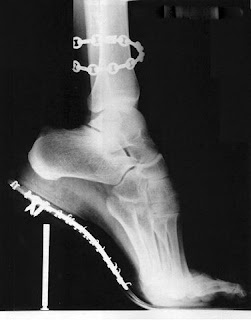XIV. After time, the fad spread to women and men eventually stopped wearing heels altogether.
We posted this post to our local Patch, and one of the comments we got was, "So why did women not give up heels like men did?" A new study published in the journal Evolution and Human Behavior may have the answer!
The University of Portsmouth team was led by psychologist Paul Morris, who says that while footwear preferences are based on cultural norms, the popularity of high heels comes from a deeper impulse. It's how the footwear changes the mechanics of a woman's gait.
Morris and colleagues conducted two experiments using a point-light display. 15 men and 15 women watched dotted outlines of 12 women as they walked for four minutes apiece, two minutes in flats and two minutes in high heels. The participants were then asked to rate how attractive they found the women.
"For all walkers, the attractiveness score was higher in the heels condition than in the flat condition," reports the researchers. Both men and women believed women to be more attractive in heels than in flats.
In the second experiment, 82 women and 38 men watched the same 12 women do the same four minute walk split between high heels and flats. This time, they were asked to judge if the walkers were men or women. When wearing flats, 28% of women were incorrectly called men, but in high heels, that number went down to 11%.
So why such a difference? Researchers say that participants found when the women wore high heels, they "walked in a fashion more characteristic of the female gait." They took "smaller, more frequent steps" and the reduction in the length of their stride had "increased rotation tilt of the hips."
High heels, therefore, point out the differences in how men walk and how women walk. The way women walk makes them appear more feminine (or less feminine, as in the case of the flats) and stimulates "sexual arousal in males" along with increased female attention (those who are spotting competition).
This happens either consciously or unconsciously, but this information states that the impulse to wear high heels goes beyond fads. Morris and his colleagues concluded that a woman walking in high heels is a "supernatural stimulus", meaning an enhanced version of a stimulus found in nature.
Reference: Pacific Standard.
If you believe have a foot problem and do not currently see a podiatrist, call one of our six locations to make an appointment.
Connecticut Foot Care Centers
Podiatrists in CT
Visit our website, like our page on Facebook, and follow our tweets on Twitter.




No comments:
Post a Comment